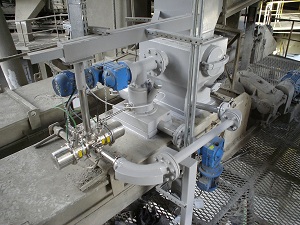In a new presentation from Malvern Panalytical entitled ‘Moving laser diffraction from the laboratory into the production process’, Product Group Manager Dr. Paul Kippax discusses the benefits and challenges of taking laboratory-based particle sizing out into the production process.

The presentation is particularly tailored to the pharmaceutical industry but is generally relevant to all manufacturers considering an investment in on-plant real-time particle size measurement.
Particle size information is used in the development and manufacture of a significant number of products, with laser diffraction now the analytical technique of choice across many industries. A key attraction of the method is the availability of process systems for real-time measurement that complement highly productive laboratory instruments. However, some still perceive the transition from lab to line as potentially problematic and consequently fail to fully exploit the potential of this powerful analytical method.
In the presentation Dr Kippax looks at how particle size information is used to understand and control product performance, and examines the application and benefits of both off- and on-line measurement. He reviews the primary requirements of a process analyzer, which are to deliver relevant information, in a relevant timeframe, using an appropriately robust device and goes on to outline how laser diffraction process systems, as exemplified by Malvern Panalytical’s Insitec range, meet these challenges, by combining rapid measurement with extremely high reliability.
Installed in the process line or on an associated sampling loop, these systems deliver the real-time monitoring that underpins optimized, often automated, control, and can return substantial economic return. Throughout the presentation the focus is on how best to apply laser diffraction technology to meet requirements, whether in research, development, manufacture or QC, and how to ensure the successful application of the technique across the product lifecycle.
To view the presentation or for other presentations, webinars and support on the implementation of on-line particle sizing, please visit www.malvern.com
About Malvern Panalytical
Malvern Panalytical is a leading supplier of analytical solutions for particle characterization and rheological applications. Advanced measurement technologies are combined with robust mechanical designs and comprehensive data handling and automation software, to provide systems that are relevant across a wide range of industrial and fundamental research applications.